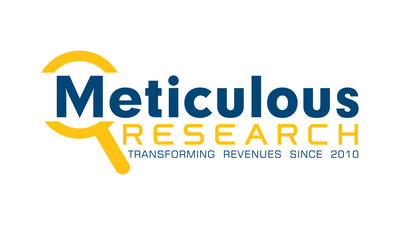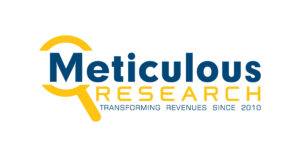Industrial Metaverse Market Set to Skyrocket to $600.6 Billion by 2032

Industrial metaverse Market Set to Expand from USD 48.2 Billion to USD 600.6 Billion by 2032
Overview of Market Growth
Redding, California – June 27, 2025 – The industrial metaverse sector is on a remarkable growth trajectory, with projections indicating an increase in market value from USD 48.2 billion in 2025 to an impressive USD 600.6 billion by 2032. This growth represents a compound annual growth rate (CAGR) of 20.5% during the forecast period from 2025 to 2032. This surge is largely attributed to the industrial sector’s swift integration of immersive digital technologies that blend physical and virtual realms, fundamentally transforming manufacturing, engineering, and operational methodologies.
- Overview of Market Growth
- The Role of Digital Transformation
- Extended Reality (XR) Technologies in Industry
- Cloud Computing and AI: Enhancing Scalability
- Government Initiatives and Market Dynamics
- Dominance of Cloud Computing
- Prototyping and Simulation Applications
- Sector-Specific Insights
- Manufacturing Sector Leadership
- Aerospace and Defense Adoption
- Regional Market Dynamics
- North America: A Leader in Technology
- Asia-Pacific: Rapid Growth Potential
- Europe: Focus on Sustainability
- Future Opportunities and Challenges
- Industry 5.0: Human-Centric Digital Environments
- Predictive Analytics and Operational Intelligence
- Market Challenges
- Conclusion
The Role of Digital Transformation
The industrial metaverse is at the forefront of digital transformation, driven by the pressing need for businesses to modernize their operations through immersive technologies. This shift aims to boost productivity, enhance safety, and foster innovation.
Extended Reality (XR) Technologies in Industry
Across the globe, manufacturing and industrial facilities are adopting Extended Reality (XR) technologies—such as Virtual Reality (VR), Augmented Reality (AR), and Mixed Reality (MR)—to develop immersive collaborative spaces. These technologies allow for real-time visualization, remote assistance, and improved training experiences, facilitating a seamless connection between physical operations and digital twins. This integration empowers engineers and operators to engage with intricate systems in virtual settings before making physical changes.
Cloud Computing and AI: Enhancing Scalability
The combination of cloud computing and artificial intelligence is crucial for the scalable implementation of industrial metaverse solutions worldwide. Cloud platforms provide the necessary computational resources to render complex 3D environments, support real-time collaboration among distributed teams, and analyze vast amounts of industrial data for informed decision-making.
Government Initiatives and Market Dynamics
National digitalization strategies and Industry 4.0 initiatives are accelerating the adoption of industrial metaverse technologies, offering significant policy support and financial incentives. These programs recognize the importance of immersive digital environments in maintaining industrial competitiveness and fostering innovation on a global scale.
Dominance of Cloud Computing
Cloud computing is projected to be the largest segment of the industrial metaverse market, accounting for over 18.0% in 2025. This dominance is due to the flexibility and efficiency offered by cloud platforms, which allow for on-demand IT resource delivery and pay-as-you-go pricing models. This approach helps organizations enhance operational efficiency while safeguarding sensitive industrial data.
Prototyping and Simulation Applications
Prototyping, testing, and simulation applications are expected to lead revenue generation, capturing 33.2% of the market share in 2025. The industrial metaverse‘s ability to streamline product development cycles while minimizing costly errors is a key driver for this segment. These applications enable real-time collaboration among geographically dispersed teams, allowing for rapid design iterations and concept testing in virtual environments.
Sector-Specific Insights
Manufacturing Sector Leadership
The industrial goods and manufacturing sector is anticipated to remain the largest end-user segment, representing over 28% of the market in 2025. This leadership is attributed to the sector’s intricate product development processes and ongoing need for innovation to maintain a competitive edge.
Aerospace and Defense Adoption
The aerospace and defense sector is witnessing significant growth as manufacturers leverage industrial metaverse solutions for complex system design, maintenance training, and mission planning. These technologies allow engineers to visualize intricate components and simulate maintenance procedures in risk-free virtual environments.
Regional Market Dynamics
North America: A Leader in Technology
North America is projected to dominate the global industrial metaverse market, holding over 36% of the market share in 2025. This leadership is supported by advanced technological infrastructure, substantial investments in research and development, and early adoption of immersive technologies across various industrial sectors.
Asia-Pacific: Rapid Growth Potential
The Asia-Pacific region is emerging as the fastest-growing market, driven by rapid industrialization and government initiatives aimed at digitalization. Countries like China, Japan, and South Korea are implementing comprehensive strategies to modernize their manufacturing sectors and enhance global competitiveness.
Europe: Focus on Sustainability
European markets are advancing the adoption of industrial metaverse technologies with a strong emphasis on sustainability and environmental compliance. The region’s commitment to green manufacturing and circular economy principles is driving the use of virtual design and testing solutions that reduce physical prototyping and environmental impact.
Future Opportunities and Challenges
Industry 5.0: Human-Centric Digital Environments
The transition towards Industry 5.0 emphasizes the importance of human workers within intelligent industrial systems, with metaverse technologies facilitating enhanced human-machine collaboration. This shift is leading to the development of more intuitive virtual interfaces and personalized training experiences.
Predictive Analytics and Operational Intelligence
AI-driven predictive analytics integrated into industrial metaverse platforms are transforming operational intelligence by analyzing extensive operational data to anticipate equipment failures and optimize production schedules.
Market Challenges
Despite its promising growth, the industrial metaverse market faces challenges such as cybersecurity threats, high capital expenditure requirements, and a shortage of skilled personnel. Additionally, the integration of metaverse solutions with existing legacy systems poses ongoing hurdles for market expansion.
Conclusion
The industrial metaverse market is poised for significant growth, driven by advancements in immersive technologies and a strong focus on digital transformation. As industries continue to embrace these innovations, the potential for enhanced operational efficiency and competitive advantage will only increase.
For more detailed insights, visit Meticulous Research.







